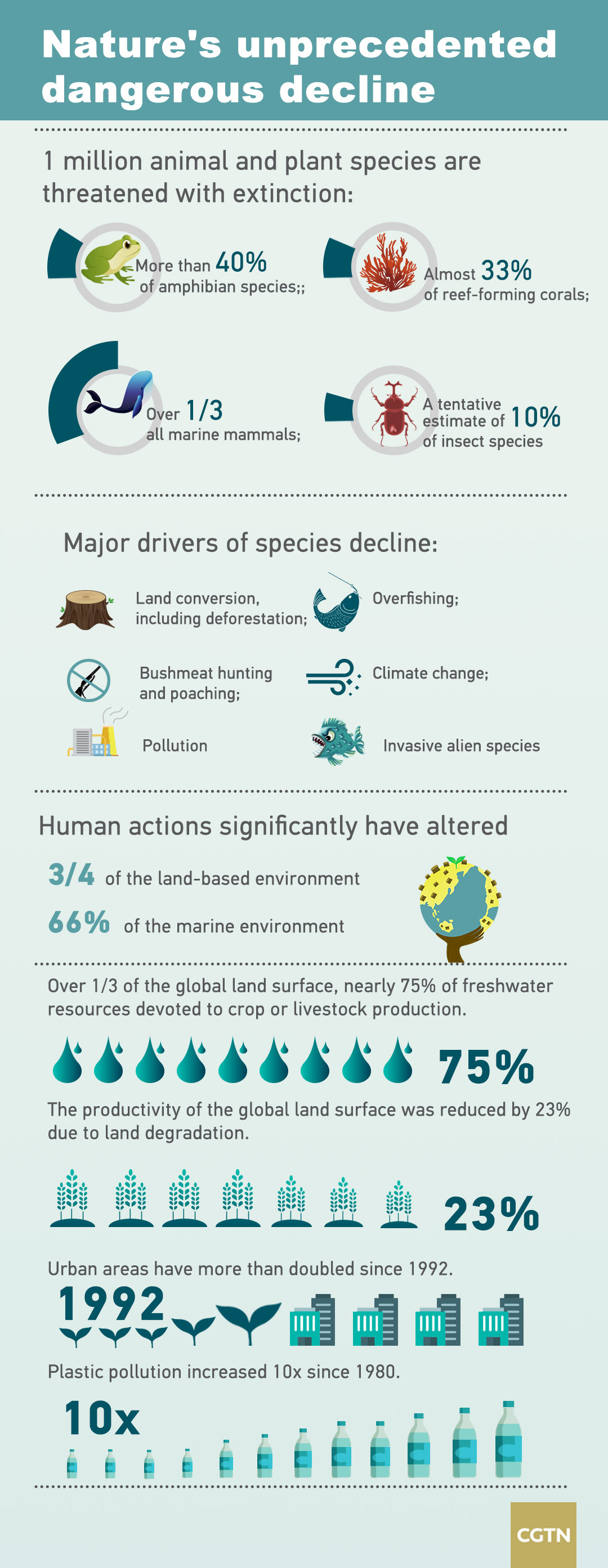Eyes on China meeting to reverse extinction risk of 1 million species
The devastating impact of human activity will lead to the extinction of more than 1 million plant and animal species, many within decades, said a United Nations assessment report released in Paris on Monday May 6th
Prepared by the Intergovernmental Science-Policy Platform on Biodiversity and Ecosystem Services (IPBES), more than 450 researchers and 15,000 scientific findings contributed to the report.
Raising the alarm over the high rate of natural resource destruction in the last five decades, researchers termed it as "unprecedented in human history."
Rising population coupled with climate change and overexploitation of natural resources is taking a toll on the ecosystem, the report said.
Globally, the human population has nearly doubled from 3.7 billion in 1970 to 7.6 billion, increasing demand for food, housing and energy which has altered land use and increased emissions. It has also led to the destruction of forests, rising air and water pollution.
Researchers found that due to human activities, nearly 25 percent of species in the assessed animal and plant groups are threatened, suggesting that about 1 million species are already facing the extinction threat.
"Ecosystems, species, wild populations, local varieties and breeds of domesticated plants and animals are shrinking, deteriorating or vanishing. The essential, interconnected web of life on Earth is getting smaller and increasingly frayed," said Josef Settele, one of the co-chairs of the report.
"This loss is a direct result of human activity and constitutes a direct threat to human well-being in all regions of the world," he added.

Large-scale exploitation of natural resources for energy generation, farming and livelihood have altered 75 percent of the land surface.
In order to feed the world, more than a third of the planet's land surface and nearly 75 percent of freshwater resources are now devoted to crop or livestock production, the report said.
More than 32 million hectares of primary or recovering forest was wiped out between 2010 and 2015.
Wetlands have suffered the maximum damage with 85 percent of its areas lost.
Marine creatures are facing double trouble with 33 percent of marine fish stocks being harvested at unsustainable levels in 2015 and uncontrolled plastic pollution.
Since 1980, plastic pollution has increased tenfold.
Toxic sludge and effluents from industrial facilities are dumped annually into the world's waters, and fertilizers entering coastal ecosystems have produced more than 400 ocean "dead zones," totaling more than 245,000 square km – a combined area greater than that of the United Kingdom, the report said.
For the first time, authors ranked five major drivers causing catastrophic change on the planet. According to researchers, changes in land and sea use, exploitation of organisms, climate change, pollution and invasive species are leading factors behind loss of biodiversity.
The biodiversity conference in China will strive to revise targets for protection and revival of natural areas to control climate change, rising air pollution and ensure availability of safe drinking water.
Inscrivez-vous au blog
Soyez prévenu par email des prochaines mises à jour
Rejoignez les 88 autres membres
